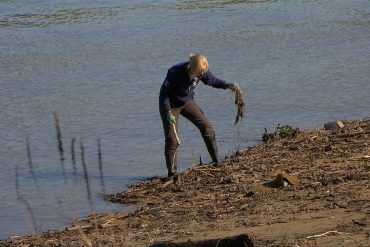“Residential schools” were the names given to schools in which many Indigenous children in Canada were forced out from the 17th century onwards. Many died from illness or poor treatment in facilities. There they wanted to “convert” and “civilize” these children. It was not until 1997 that the last of these schools was closed.
vital knowledge
“It is now the turn to examine the floors of all these areas of former residential schools with radar and other measurements to find as many remains as possible from these children who were forcibly re-educated in these schools.”
It is very important for the tribal community. And now officials are working with him too, Menrath stressed. Authorities have the money needed to finance radar technology, for example – money that indigenous communities lack.
The schools were originally for the descendants of European fur traders and indigenous women. They should not develop into indigenous culture, but become “civilized”.
Missionaries and Colonists in Common Cause
Because more and more settlers were coming to the country, they wanted to re-educate the indigenous people – turn them into Christians and farmers so that they would “and eventually get out of the way”.
According to Menrath, colonialism and proselytism went hand in hand: the colonists needed land to settle in – “and the missionaries, they just wanted to save souls”.
Children performed very poorly in schools. Home sickness, unfamiliar customs and unfamiliar food, some of them from tin, troubled them.
“They were addicted to game and fish, and were severely punished. They were beaten if they spoke their language.” Those who left the school grounds were later imprisoned for it. The historian lists the abuse as, “Some of them were put on electric chairs and abused by electric shocks.”
Church and State Equally Responsible
Catholic houses were administered and financed by the government. The basis is the “Indian Act” of 1876, the law still in force in Canada. The law governed the legal status of First Nations, as most of the indigenous peoples of Canada are called today.
Both the church and the government bear the responsibility. Menrath’s report stated, “While the Canadian government apologized in 2008 for the suffering it inflicted on Indigenous peoples—this cultural genocide—as did the Presbyterian, Methodist, and Union churches, the Catholic Church has never officially apologized. Didn’t ask.”
The discovery of the grave may have contributed greatly to the explanation, as it is now clear that injustice against indigenous peoples continues to this day. The historian is convinced: “I think much of Canadian society is really shocked now.”
New pain from losing identity
About 70,000 children from the former “residential school” are still alive, and many are still suffering psychologically from the consequences of their school days, sometimes becoming alcoholics and unable to care for their children.
This resulted in a new injustice. Because the Canadian state took children away from these survivors of “residential schools”, placed them in foster families or put them up for adoption.

Devoted web advocate. Bacon scholar. Internet lover. Passionate twitteraholic. Unable to type with boxing gloves on. Lifelong beer fanatic.





